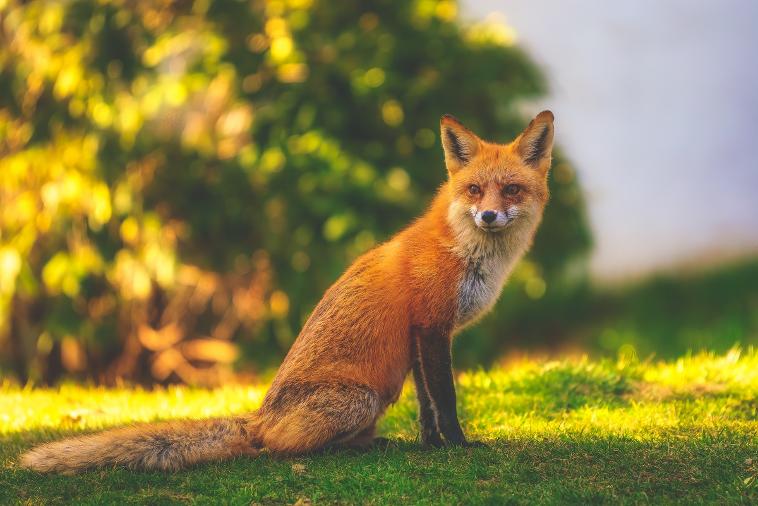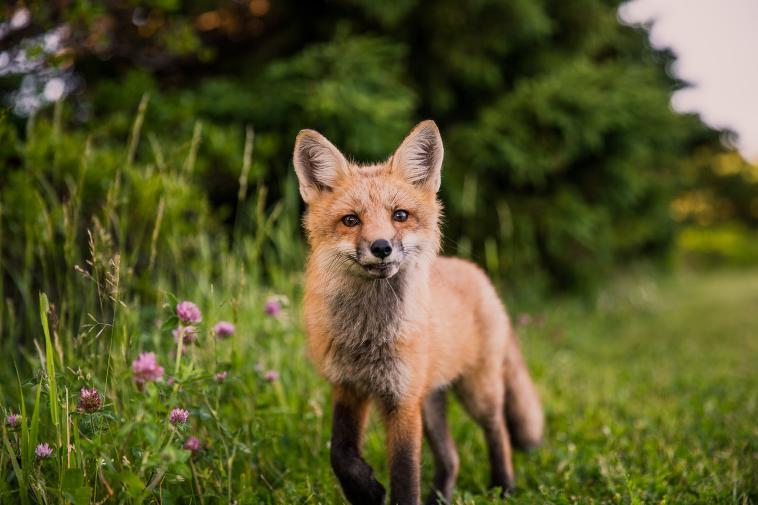
Wildlife & ethics
Ensuring the animals’ needs are put first should be every wildlife enthusiast’s priority.
Red foxes (vulpes vulpes) face many threats to their survival in the UK, including habitat loss, climate change, hunting, traffic and disease. The decline of birds, insects, mammals, reptiles and amphibians over the past few decades, will also have had an impact on the variety of food sources available to foxes and people are rightly concerned about how this decline may be impacting them. It is important to remember that fox populations are self regulating and there is no indication they require management, despite the loss of biodiversity. The best way to help foxes is to plant native and support local biodiversity.
Foxes have been thriving in our shadows and consuming human food waste for over 42,000 years. As an elusive but regular visitor to our gardens, it is understandable people want to support foxes, sharing their insights and experiences with these fascinating animals through social media. However, it is important it is done responsibly, for the best interest of the fox.
As stated perfectly by National Geographic:
“Modern society’s disconnect from nature presents its own threat, one of a culture of indifference. We lead virtual lives, plugged into devices instead of the outdoors... Wildlife photography has the power to turn people on to the wonder of nature. It’s an essential tool to inspire the desire to protect wildlife and spark real change. Photos can go viral on social media in mere minutes, bringing much-needed attention to wildlife in the throes of crisis. At the same time, social media throws together those who seek to visually capture nature in honest, careful ways with those who take shortcuts at the expense of the subject, intent only on more likes and followers.”

Habituation: Why Does it Matter?
Wild animals face novel environmental threats as a result of human activities, which occur along a gradient of different human interactions. Recent studies have shown that merely living close to humans has major implications on a variety of traits and physiological responses in animals.
Habituated individuals are characterized by their low aggressiveness and their reduced physiological stress response, as well as by their enhanced boldness and behavioral plasticity. Such ‘preactive’ individuals have a physiological and behavioral coping style that falls outside of the classical proactive or reactive coping styles.

What is Habituation?
Habituation is a phenomenon that occurs when an animal is repeatedly exposed to a stimulus, to the point they become unresponsive to that stimulus.
Wild foxes should have a natural fear of people but in our towns and cities foxes are constantly exposed to human activity, becoming habituated to our presence and with a reduced ‘flight distance’ as a result (the distance they know to maintain between them and threat, in order to remain safe). When wild animals no longer see people as a threat, they may allow people to come close or they may actively approach people out of curiosity.
If people then feed the animal, they will be reinforcing that behaviour, increasing the likelihood it will occur again. If this process is repeated, it will actively condition the animal to seek out humans as a source for food. While this gives people an incredible opportunity to experience a connection with wildlife, habituation and behavioural conditioning are dangerous for both wild animals and people.
Habituation is Dangerous for Wild Foxes
When animals become used to human presence it can open them up to unintentional harm, such as the health results of an improper diet or because they are less likely to avoid traffic, hunters and pest controllers. Unfortunately, many urban foxes have become so habituated and conditioned to perceive people as a food source, that more and more foxes are being reported approaching people or casually entering homes. While some people may see this as endearing, others may see it as a nuisance behaviour or as a sign of ill-health.
This is not without just cause. Tameness is the top symptom for toxoplasmosis in foxes, a parasite that infects the brain and removes their natural fear responses. It can be congenital and may not be visibly noticeable until the fox is older and the symptoms become more severe. More foxes in one area also means more potential for contact and transmission of diseases common in foxes, like toxoplasmosis or sarcoptic mange. Not testing and treating a suspected case of toxoplasmosis allows the parasite to spread and to continue its harms, but with habituated foxes around, it makes recognition of the disease more difficult, (toxoplasmosis is also a concern for private keepers - ensure wildlife cannot get close and that cats and rodents cannot enter the enclosure, deep clean weekly and know the signs of the disease).
The National Fox Welfare Society states;
"With all the Toxo infected foxes we have dealt with over the years the condition left them almost like a domestic dog. Whilst this may be difficult to understand for anyone not involved with fox rescue, we have found in almost all cases of Toxo infection, the wild eyes that you would expect to see in a fox are gone and it is almost like looking into a domestic dogs eyes where Toxoplasmosis is involved."
"Wolves infected with a common parasite are more likely than uninfected animals to lead a pack, according to an analysis of more than 200 North American wolves. Infected animals are also more likely to leave their home packs and strike out on their own.
The parasite, Toxoplasma gondii, makes its hosts bold — a mechanism that increases its survival. To reproduce sexually, T. gondii must reach the body of a cat, usually when its host is eaten by one. That becomes much more likely if the parasite alters the host’s behaviour, making it foolhardy. Research results are mixed, but in rodents, infection generally correlates with decreased fear of cats and increased exploratory behaviour. Physical and behavioural changes have also been found in people: testosterone and dopamine production is increased and more risks are taken.
Warm-blooded mammals can catch the parasite by eating an infected animal or ingesting forms of T. gondii shed in the faeces of infected cats. After a period of acute infection, semi-dormant cysts form in muscle and brain tissue, and persist for the rest of the host’s life. Up to one-third of humans might be chronically infected."
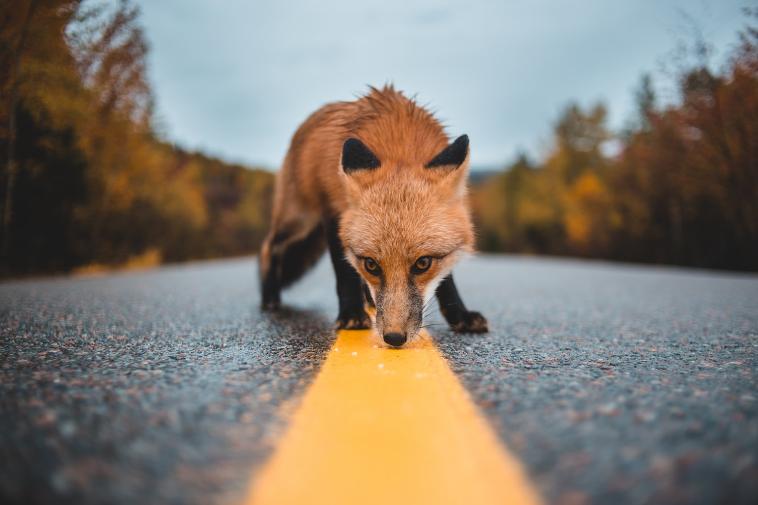
Habituation is Dangerous for Ecology
In a typical ecosystem, predators tend to have the smallest populations. Predators and prey share a balance within an ecosystem but that balance is easily disrupted when we feed predators such as foxes. With extra food from us, their numbers can increase and become artificially high, potentially outstripping their supply of natural foods and increasing the incidence of injury and disease, as nature attempts to restore balance.
"Two of the main arguments against feeding wildlife are that it leads to artificially high population sizes that cannot be sustained if the supplementary food is removed, and that supplemental feeding may lead to the animals becoming dependent on the handouts. The idea that provision of food by humans leads to greater numbers of animals and could lead to them becoming dependent on our handouts go hand in hand...
In his fascinating overview of the issues and impacts of feeding wildlife as a tourist attraction, published in the journal Tourist Management during 2002, marine ecologist Mark Orams, at New Zealand’s Massey University at Albany wrote:
“The ability of animals to find food is often determined by learned behaviour – such as where to go, how to approach potential prey and how to effect capture of that prey. When an animal does less of this, they quite simply become less efficient at it.”
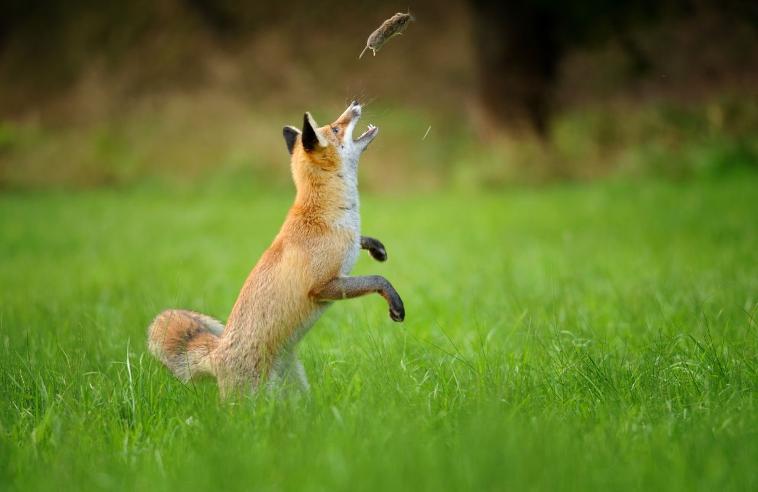
© Duben
Habituation is Dangerous for People
Foxes in towns and cities may allow people to get unusually close to them. If they seem tame and are not unwell, it is because they have become habituated to humans and that is not natural.
Despite appearances, they will feel threatened if a person comes too close. When foxes feel threatened they will usually run away, increasing the flight distance. But a habituated, bold fox may stand its ground, gekker or even bite. An overly bold fox may also approach a person and nip at their hands or clothes in order to initiate a response and elicit food. Naturally, a wild fox would never allow a person to come close enough for them to be injured.
A Note on Caching
Caching is not something that might happen with foxes, it is pretty much guaranteed, and certainly so if there is excess. Feeding excess is a surefire way to annoy neighbours and cause tension, putting foxes at risk from pest controllers. Foxes have cat-sized stomachs and toilet more frequently, also using it as a means of communication (they will toilet on caches to mark them). If foxes are burying food in neighbours gardens, it is because they don't like, want or need it. It is a sign you are feeding too much.
Habituation Leads to Domestication
Behaviour, form and function are inextricably interlinked and the feeding of wildlife is not without consequences. In 2017, Oxford University published a study revealing how human-directed evolutionary changes have resulted in British birds adapting their beaks for specific bird feeders.
Changes in the diet and behaviour of urban foxes hasn't gone without consequence either and there has been divergence and morphological changes observed in urban foxes in comparison to their country cousins, as reported in the 2020 study, Urban Red Foxes are Diverging from their Country Cousins* by the University of Glasgow.
"Independent human–wildlife feeding interactions (i.e., the feeding of wildlife by the public outside of organized ecotourism activities) represent an increasingly common way in which humans and wildlife are engaging with one another. It is important to determine what effects these interactions are having on the wildlife involved in order to ensure that optimum coexistence scenarios are being achieved, however the nature of these interactions makes them notoriously difficult to study.
Extrapolation from ecotourism activities has suggested detrimental impacts on the health and fecundity of the populations involved. Moreover, recent findings indicate that bold individuals may actually gain reproductive advantages from this excess food supply, driving artificial selection of risk-taking behaviors within human-dominated landscapes. Humans may, therefore, be unknowingly manipulating wildlife populations, forcing them into unnatural states, and potentially decreasing future viability"
Should we Feed Wildlife? A Call for Further Research into this Recreational Activity, 2023
Habituating an animal to human presence is an important step in the domestication process, so it is important to understand the impact human activity is having on wild foxes, especially when studies are reporting ‘self-domestication’ symptoms among wild populations.
*Black Foxes UK does not feel this is the full picture, as others may also (Foxes are self-domesticating in the U.K, so why not Canada?). The domesticated silver fox, also known as the farmed North American red fox (previously vulpes fulva), is a species known to have feralised and hybridised in several regions across the UK, including London and thus these foxes carry traits of an introduced subspecies, the farmed North American red foxes, which also share changes to facial shape due to domestication. We look forward to further studies into the matter.
UPDATE: New research into the genetic diversity of wild and captive bred foxes published in June 2024.
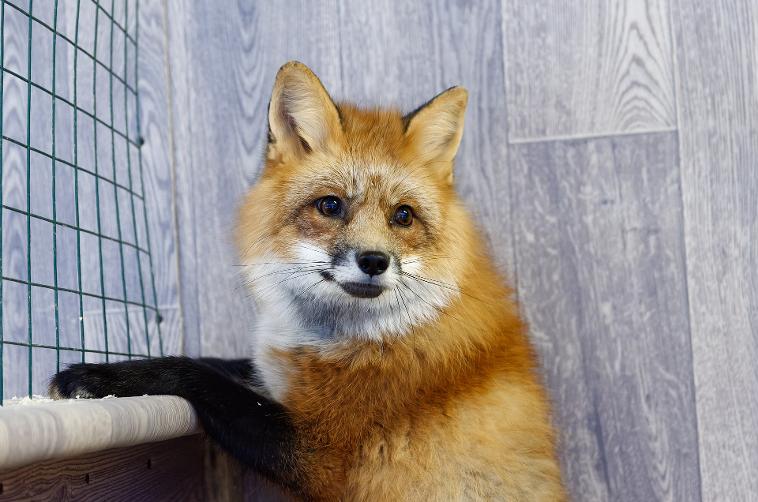
© Aalnik96
Three Basic Principles to Remember
1. Do No Harm
- Do not seek or reinforce a foxes attention or interaction with food.
- Take special care not to impact cubs at breeding season.
- Know the signs of stress and overconfidence in foxes.
- Ensure a heightened level of awareness of your impact on them.
In short, “do no harm” means allowing foxes to hunt, eat and rest in comfort as they would naturally, without feeling threatened or imposed upon - however much they may invite it. Breeding season requires special care. Avoid actions that might habituate cubs to humans or that might result in driving parents away from the den. Do not purposefully teach foxes, especially mothers and cubs, to beg for food from humans.
Continuously observe animal behaviour and realize when there is a need to back off or walk away. Reading up in advance and being educated about fox behaviour is the best means people have to recognize what might be considered as an unethical imposition.
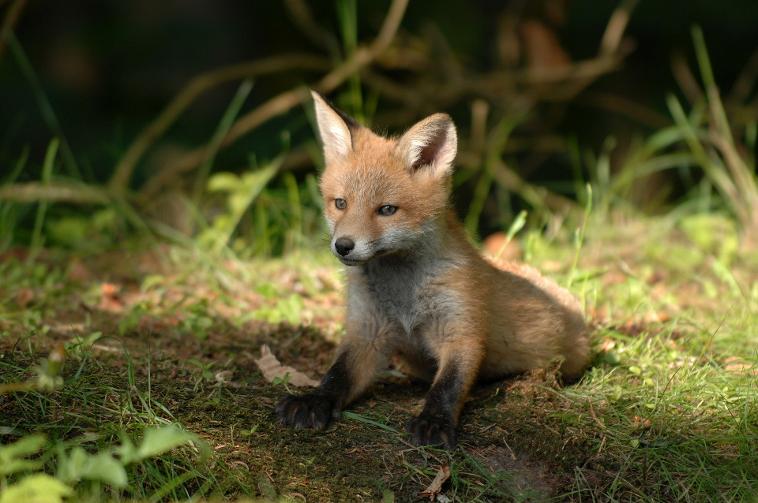
© Xeppo
2. Keep Them Wild
Be cautious about feeding foxes: Overfeeding may reduce wild hunting behaviours and can cause frustration to neighbours with the caching of excess supplies. More caching in gardens may result in more contact with cat faeces and the toxoplasmosis parasite. On top of this, highly processed foods are a well known contributory factor for disease in humans and an unnecessary burden we do not wish to impose on wildlife deliberately.
Avoid habituating foxes or making them dependent - Especially nursing vixens and cubs. Healthy wild foxes do not need our interference or our companionship. They are opportunists and will take food if it is offered, but they are perfectly capable of finding food on their own. Never feed a wild fox by hand or inside your home. That perfect photograph is not worth a fox’s life.
Honor their wildness and allow them some space and privacy: What foxes lack is the space and time to be foxes. You can provide a means for them to stay safe from human activities by building and planting a decent wildlife habitat in your garden. Support their natural ability to provide for themselves, you won't be disappointed!
Be neither friend nor foe: For wild foxes, humans are a predator. We need them to maintain healthy boundaries away from people if we wish to avoid increasing human-wildlife conflict. Foxes should not be actively approaching you, eating from your hand or entering your home. Please keep a respectful distance.
If a wild fox is seemingly tame or is seeking out human contact:
- it may be an escaped exotic pet (North American red fox, a non-native subspecies),
- it is being fed in a way that has reduced its fear of man,
- it has been rehabilitated and released incorrectly,
- or it may be sick (it does not necessarily need to ‘look sick’).
If a fox is approaching people, these things must be considered and the cause addressed. Illness or injury must be ruled out first. Contact a wildlife charity for more information if you are concerned about a fox.
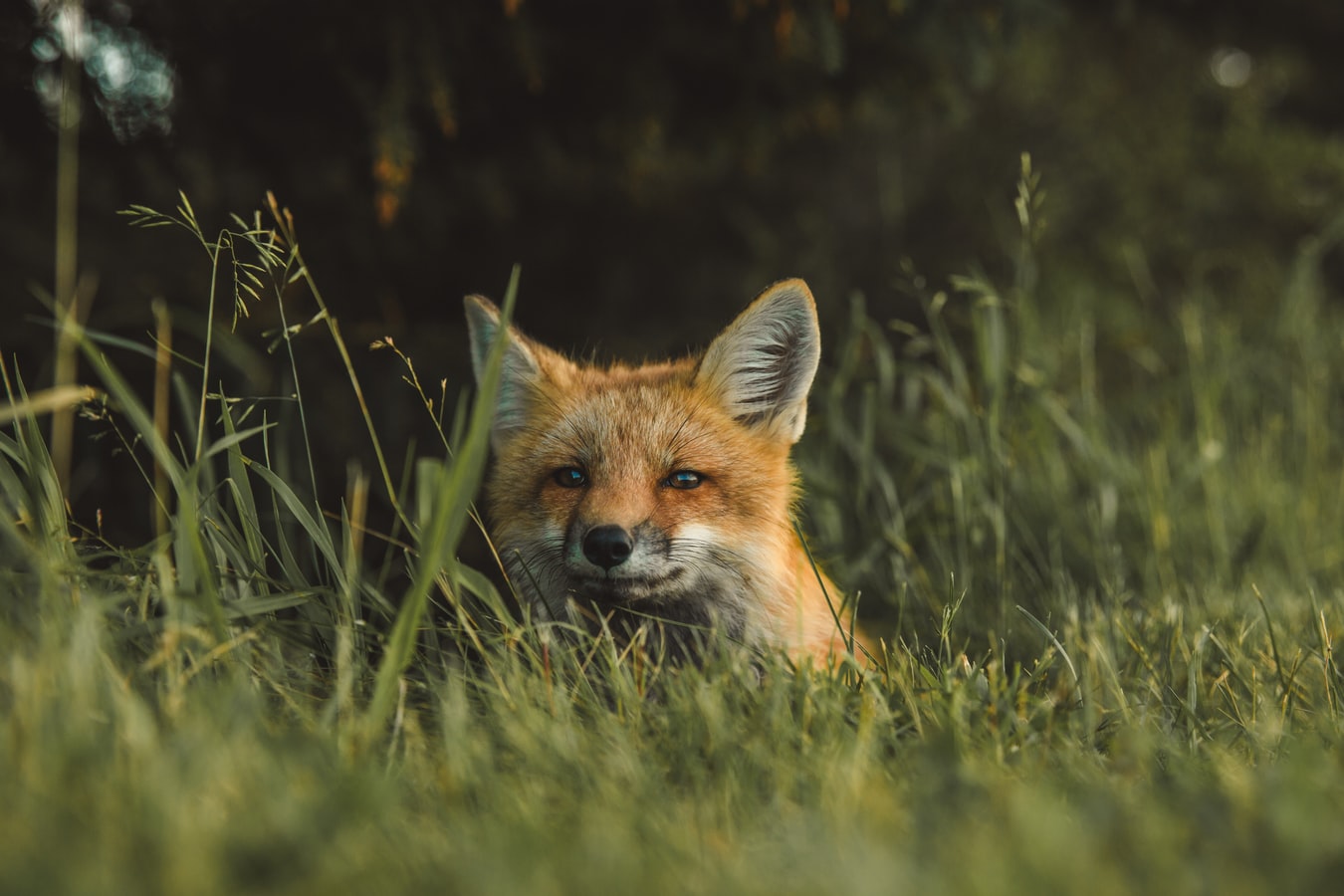
3. Feed Responsibly
Is feeding the animal likely to change its behaviour in harmful ways?
When encouraging foxes for photographic opportunities with food lures, make sure you are not feeding in an area where foxes are unwelcome, hunted or controlled. As feeding foxes will habituate them to humans and make them an easy target. Or they may become too bold in approaching people for food, which might lead neighbours, councils and local landowners to capture and humanely euthanize the animal.
What do foxes eat naturally?
Foxes are commonly considered carnivores (meaning they consume meat) and as nocturnal (meaning they hunt at night), but can be more accurately described as crepuscular mesocarnivores, hunting at dusk and dawn, with a diet that consists of only 50-70% meat. They eat a wide variety of foods, including;
- Rodents, Squirrels & Rabbits
- Birds, Wildfowl & Eggs
- Amphibians & Small lizards
- Insects, Invertebrates, Earthworms & Grubs
- Fruits, Nuts & Berries,
- Grasses, Herbs & Vegetables
- Grains, Acorns, Fungi, Shoots & Seeds
Is the food appropriate and safely provided?
While foxes do eat a variety of foods, it is important to remember that they have an ecological role to play and that their digestion and physiology is primarily geared towards the digestion of insects, earthworms, rodents and small prey species. Be mindful of the fact that inappropriate diets and food presentation can also contribute to poor health and promote disease. Feeding wild animals, whether on purpose or by accident, can be harmful to their health and ours.
Food Type: Only 50-70% of a foxes diet is prey items or meat, the rest of their nutritional needs are obtained from plant matter. Human foods are highly processed and not designed with wildlife in mind, failing to meet their unique nutritional needs, causing malnutrition, reduced immunity and increased vulnerability to accident or injury.
Hygiene: Feeding wildlife creates a situation whereby a whole host of animals that would not come into contact with each other naturally, end up spending time eating together in close contact, increasing the spread of zoonotic diseases and attracting pests. Ensure that any food is distributed in a limited, safe and hygienic manner to minimize health risks.
Caching: Foxes will cache excess food, sometimes defecating on it to prevent return. Overfeeding encourages this behavior, leading to increased human-wildlife conflict and increased risk of parasites like toxoplasmosis from soil and cat feces.
Timing: Foxes are active at dusk and dawn. To minimize risks of road accidents and human-animal conflict, feed them during these times and avoid encouraging daytime activity. Scatter feed in the late evening or very early in the morning, in order to reduce the risks such behaviour presents.
Location: The location where food is provided for wildlife must be safe and free from potential hazards. Do not feed foxes near roads, nearschools, from the doors or windows of your home or in restricted areas. Ensure wildlife is fed a safe distance from your home, allowing them to behave naturally.
How much food is too much?
At Black Foxes UK, we do not promote the feeding of wild foxes and instead, would prefer that wildlife lovers provided fresh water daily and planted native plants to promote a healthy ecosystem. However, we are aware people do feed wild foxes and would like to ensure they are fully informed.
We know from studies into fox diets that up to 18% of an urban foxes diet can consist of human food waste (considerably less for country foxes). We also know that foxes weigh around 4-8kg on average and that they need around 120 calories/kg of bodyweight/day for maintenance in a thermoneutral environment.
Foxes also consume a weight of about 400g daily, meaning that a single urban fox will eat approximately 70g of human food waste throughout a single day and then will cache the rest (we don't want caching).
So we can infer from this, that if a fox is being fed <70g of appropriate foods every 2-3 days, it is unlikely to be making them dependent on you or impacting on their health and behaviour in any meaningful way.
An example of a 70g treat bag, from Lily's Kitchen (approximately 270 cal/bag) can be found, here. Or an example of Wildthings Fox and Badger Food can be found, here. Each 2kg bag would last around a month for 2-3 visiting wild foxes, with 70g provided per fox as a supplementary treat every 2-3 days. Scatter feeding a handful in the late evening or early morning at the end of your garden, will suffice. Ensure you alternate the areas you scatter the food regularly, to prevent disease and contamination.
More on fox nutritional needs can be found, here. Examples of what not to do, here.
Planting to Support Foxes?
The biggest threat to our nations wildlife is the loss of habitat and plant diversity. The best way to support foxes is to plant native, this is because a large part of their diet is fruits, berries, insects and earthworms. Planting for biodiversity is a great way to encourage a whole array of wildlife to your garden and supports the foxes natural prey.
Another way plants can help foxes is through zoopharmacognosy.
Zoopharmacognosy or pharmacophagy (remedy-eating) is a behaviour in which non-human animals self-medicate by selecting and ingesting or topically applying plants, insects, soil or mineral stones/dust in order to prevent or reduce the harmful effects of pathogens, parasites and toxins.
An example of zoopharmacognosy is when animals eat grass to induce vomiting or dust bathe to ward off parasites. Planting parasite-busting, immune-boosting plants in your garden can go a long way in helping your local wildlife help themselves.
Canid-safe, parasite-busting, immune-boosting plants:
Dandelion, Broadleaf Plantain, Milk Thistle, Chamomile, Fennel, Turmeric, Chicory, Chervil, Carrot, Celeriac, Pumpkin, Wild Oats, Barley, Rye, Hibiscus, Blackberry, Raspberry, Rosehip, Wild Strawberry, Blackcurrants, Apple, Cherries, Pear, Plum, Oak, Damson, Dates, Figs, Blueberry, Mulberry, Gooseberry, Juniper, Elderberry, Coriander, Parsley, Rosemary, Thyme, Sage, Peppermint, Sweet Basil, Lemon Balm, Sunflower, Valerian, Dill, Wild Garlic, Chives, Mint, Catmint (Catnip), Rosemary and Sage.
For those with cats in the garden also, more on feline safe plants, here.
© Dalia Kvedaraite
The Do's and Don'ts

- Do plant native and encourage the fox's natural prey (earthworms, insects, rodents, rabbits, frogs, amphibians and birds). Consider planting fox-edible plants also.
- Do leave out a bowl of fresh water, making sure you take responsibility for the thorough cleaning of any utensils and that you replace the water daily.
- Do feed at a time when foxes are most in need. Winter, for example or during particularly dry spells. Only offer just enough food so that there is little to no waste.

- Don't provide excessive amounts or leave out uneaten food that could attract rats, flies or mold, which increases the threat of disease.
- Don't put out food that is unsafe for foxes (like rawhide, processed foods, uncooked pork, or more than 20% oily fish), or put so much food out that foxes can take it away and cache it. Offer small morsels they can eat on the spot to discourage them from digging up neighbours gardens.
- Don't encourage foxes into your home, try to tame them or attempt to hand-feed them, watch from a discreet distance.
